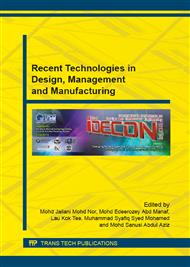p.545
p.550
p.555
p.560
p.566
p.571
p.579
p.584
p.589
A Study of Lean Behavior in Business Development and IT Department
Abstract:
Lean behavior is an essential element to create a culture of continuous improvement culture in a service organization. Continuous improvement is defined as the never-ending efforts for improvement involving everyone in an organization. The purpose of this study is to evaluate the changes of behavioral practices after the introduction of lean tools and discuss the effects of lean behavior in developing a culture of continuous improvement in an office environment. This study adopted a self-administered questionnaire method to obtain real time data for the analysis of behavioral practices. Ford Questionnaire was used and distributed to employees of different management levels in the Business Development and IT Department. The obtained results were analyzed using the Statistical Package for the Social Sciences (SPSS) software. The same questionnaire survey was distributed after the introduction of lean tools. The expected outcomes of this study were to determine the level of lean behavioral practices in the office department and to provide a clear understanding of some lean behavioral practices that need to be nurtured among the employees in order to produce a healthy work environment.
Info:
Periodical:
Pages:
566-570
Citation:
Online since:
May 2015
Authors:
Keywords:
Price:
Сopyright:
© 2015 Trans Tech Publications Ltd. All Rights Reserved
Share:
Citation:


